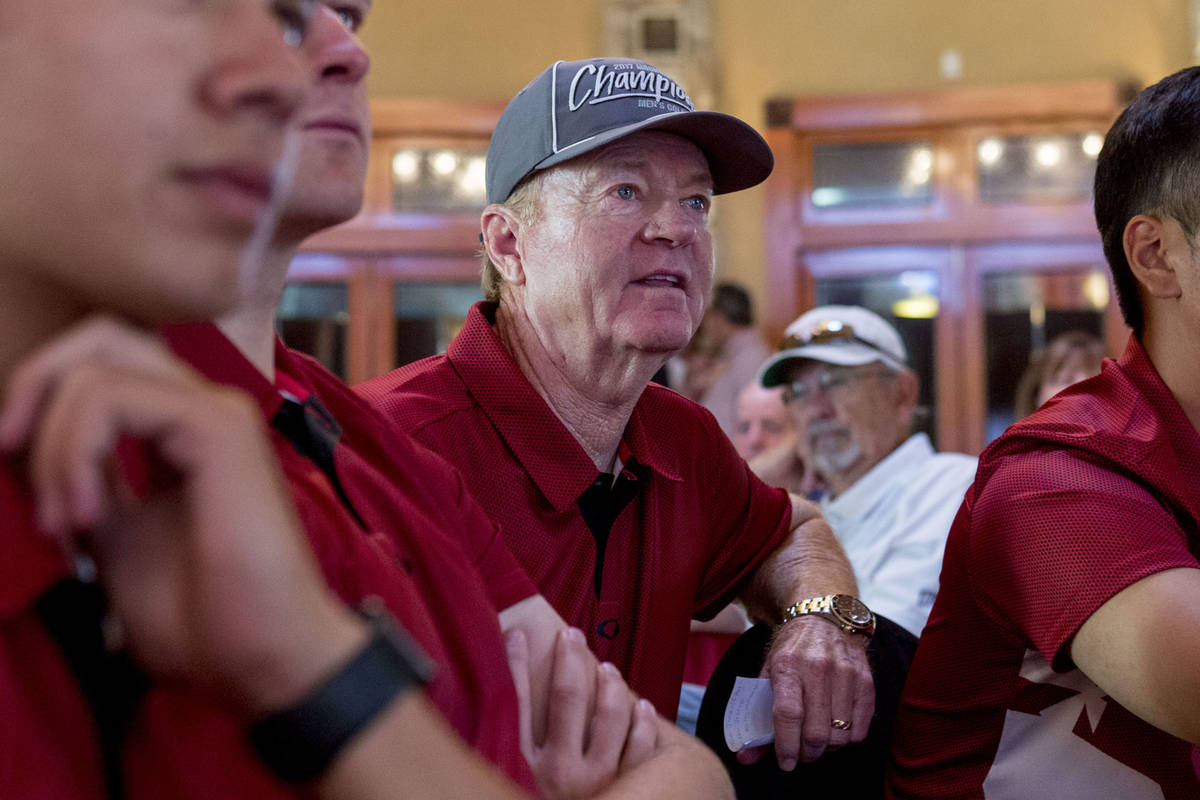NCAA nonrevenue sports turning to outside money for survival
After the coronavirus struck with vengeance in March and hastened an imminent tightening of NCAA athletic department budgets, Bowling Green’s baseball program was among the early casualties. The sport was dropped May 15 — only to be quickly reinstated when sources outside the program committed $1.5 million in donations over the next three years.
Other nonrevenue sports on other college campuses did not receive a bailout.
“It’s such a moving target right now to really know what is going to happen,” said Dwaine Knight, coach of UNLV’s 1998 national championship golf team, about the systemic elimination of nonrevenue sports on college campuses amid a national health crisis. “When are we going to be back on course, on the field, on the court? I’ve never seen anything like this.”
The Rebels’ golf program has done its part to flatten the curve. Building on a foundation he established in his previous coaching stop at New Mexico, Knight has raised enough money through endowments to where the golf team probably could continue in perpetuity, at least in a nonCOVID environment.
“That really helps, no doubt,” he said. “That was one of the things I learned at New Mexico — to make sure that we could support ourselves.”
The drawback with foundations and even some endowments, depending on how they are set up, is that sometimes they get borrowed from and the money is never replaced.
Legal mumbo jumbo
“People don’t really understand that when they write a check to an athletic department that those aren’t endowed funds,” Karen Weaver, a business professor at Drexel and a former college athletic director, told the Sportico sports business website after Stanford recently dropped 11 sports. They included a fencing program founded in 1891, for which benefactors raised $1.25 million in 2010.
Weaver added that university endowments have “a lot of legal mumbo jumbo” attached to those funds regarding how and when money can be spent.
Knight said he learned from his New Mexico experience that “if we were going to raise money, we needed to have it safe and secure. We were able to do that here, and we’ve been able to stay pretty competitive because of it.”
Whether it’s endowments, raising money over the short term to buy time or drastically reducing operating costs, it has become apparent the model for nonrevenue college sports must change if they are to survive financial challenges exacerbated by the pandemic.
Knight thinks the Bowling Green situation, where outside money is sought to support a nonrevenue program, may become common and perhaps even necessary.
“I think that probably will have to happen as we go forward because of the cutbacks,” he said, adding that “a lot of people love these sports that are being cut (and) I think it it’s going to be hard to push them all aside.”
But when a prestigious school such as Stanford that ranks fourth among U.S. colleges and universities with endowments of nearly $25 billion believes it necessary to cut 11 sports in one swoop — with the president, provost and athletic director jointly stating those sports are no longer worth sustaining with incremental funding — it makes one wonder if they haven’t already been pushed aside.
Contact Ron Kantowski at rkantowski@reviewjournal.com or 702-383-0352. Follow @ronkantowski on Twitter.
Types of University Endowments
There are four different types of endowments: unrestricted, term, quasi and restricted.
— Term endowments usually stipulate that only after a period of time or a certain event can the principal be expended.
— Unrestricted endowments are assets that can be spent, saved, invested, and distributed at the discretion of the institution receiving the gift.
— A quasi-endowment is a donation by an individual or institution, given with the intent of having that fund serve a specific purpose. The principal is typically retained while the earnings are expended or distributed per specifications of the donor. These endowments are usually started by the institutions that benefit from them via internal transfers or by using unrestricted endowments already given to the institution.
— Restricted endowments have their principal held in perpetuity, while the earnings from the invested assets are expended per the donor's specification.
Source: Investopedia


















